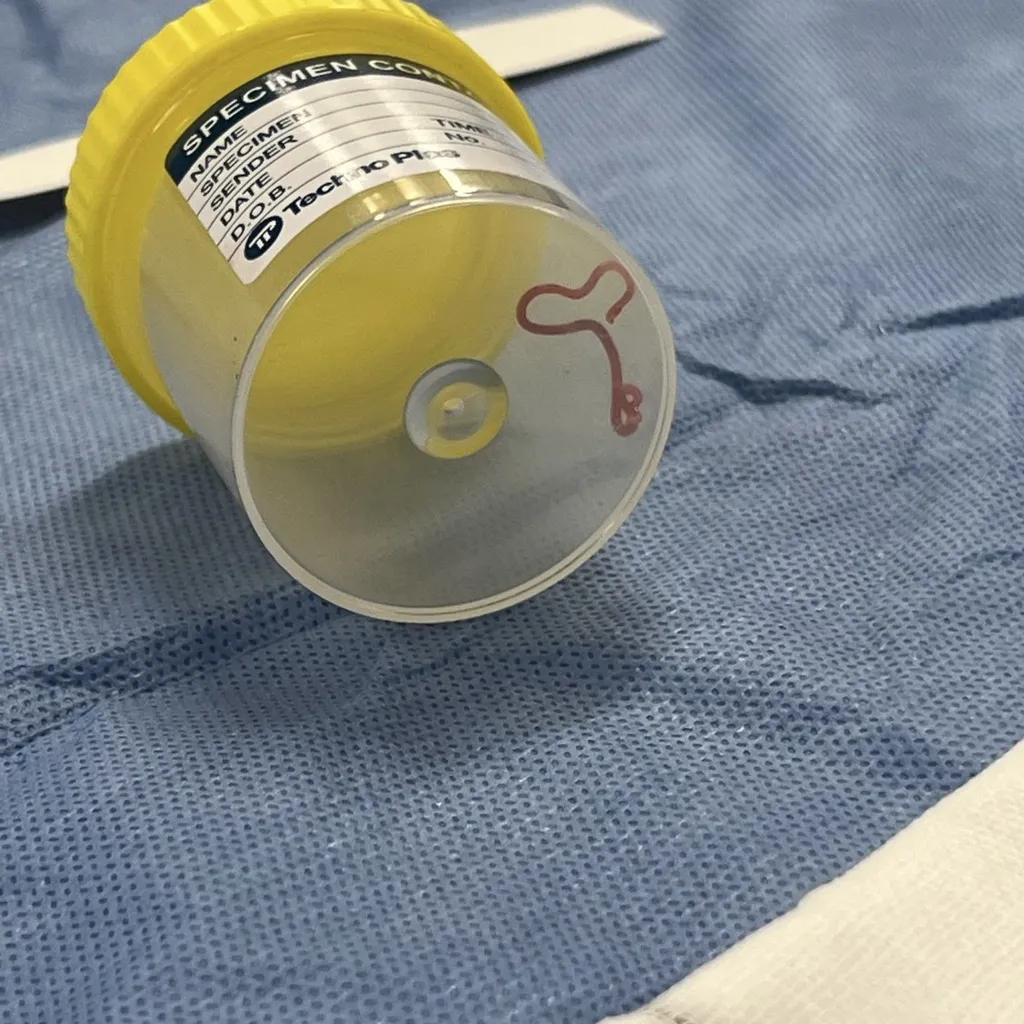At first, doctors were baffled. A 64-year-old woman from New South Wales, Australia, was admitted to hospital in January 2021 after enduring weeks of abdominal pain, digestive problems, a dry cough and night sweats. Over more than a year, various medications were ineffective and she became fretful and depressed. Scanseventually showed damage to various vital organs, including an injury in the right frontal lobe of her brain.

An operation at Canberra Hospital in June 2022 revealed the source of her ills: a thin, 8cm-long roundworm larva, red and wriggling (above). After careful extraction fro her brain, it was identified as a young Ophidascaris robertsi, a species not previously known in humans, as reported in Emerging Infectious Diseases. It’s most often found in the stomach of a carpet python, a common snake in Australia, so it took some sleuthing to uncover how it might have entered the unlucky victim’s body.
Clue 1: she lived by a lake shore inhabited by carpet pythons, but had no direct contact with them.
Clue 2: she collected a spinach-like plant there – ‘Warrigal greens’ – for cooking.
Clue 3: parasite eggs pass from carpet pythons in their poo and may then be eaten among vegetation by small mammals, such as rats, inside which eggs become larvae. If an infected mammal is eaten by a python, the cycle completes.
Solution: by gathering greens in carpet python country, the woman may have inadvertently swallowed roundworm eggs, either directly or through hands or kitchen equipment.
Sanjaya Senanyake, an infectious diseases specialist who treated the woman after surgery, said that the case highlights an increasing risk of parasites crossing over to humans as people encroach on their habitats. He added that the patient’s reaction to her diagnosis was “a mixture of shock, horror and relief, which I think all of us felt as well.”
Meet more fascinating parasites
Meet the Cymothoa exigua parasite, the tongue-eating isopod
Parasites: what they are, where they live and how parasites are transmitted
Main image: Illustration of a roundworm © Getty Images